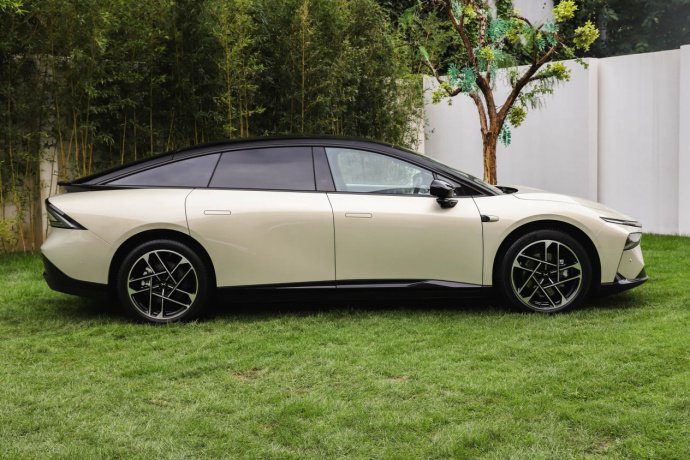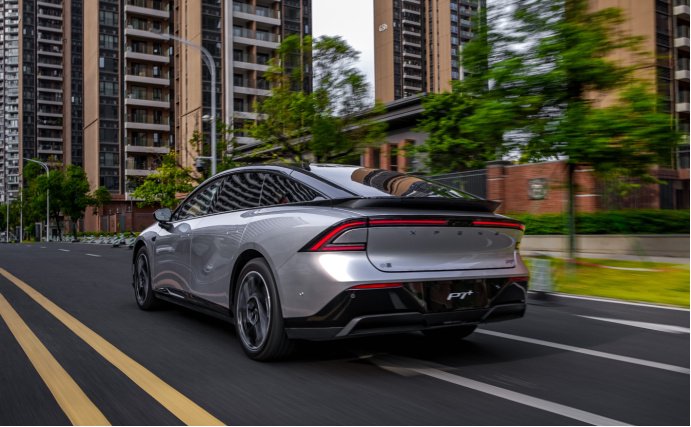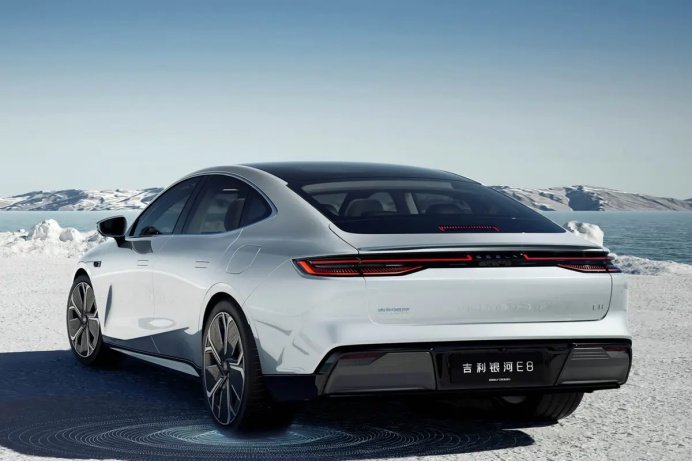The Xiaopeng P7+ and the Galaxy E8 compete in the electric vehicle market. The P7+ is an “AI smart driving coupe.” The Galaxy E8 is Geely’s flagship electric sedan. Both models show strong performance. This comparison focuses on the Xiaopeng P7+ long-range version and the Galaxy E8 550KM MAX version. **Exterior** The front of the Xiaopeng P7+ features the “Robot Face” design. It has split headlights with a continuous daytime running light and high/low beam groups. The front bumper integrates the air vents with the headlights. The Galaxy E8 sports sharp headlights on either side. Its central logo lights up. The front bumper has larger air vents.
Both models showcase a coupe style. The Xiaopeng P7+ has a drag coefficient of 0.206 Cd. The Galaxy E8 has a drag coefficient of 0.199 Cd. The P7+ features dual five-spoke rims with tires sized 235/60 R18. The E8 uses low-drag closed aerodynamic rims with tires sized 235/50 R18.
The Xiaopeng P7+ features a dual-layer rear wing design. The through-type taillights enhance recognition. The rear bumper includes a diffuser. The Galaxy E8 has through-type taillights with 390 LED beads. It supports various lighting patterns. The rear bumper’s diffuser design is more exaggerated.
Car dimensions
The Xiaopeng P7+ is a 5-door, 5-seat hatchback. The Galaxy E8 is a 4-door, 5-seat sedan. The P7+ offers more space. With the rear seats folded, the trunk volume reaches 2221L. Interior.
The Xiaopeng P7+ features a 10.25-inch full LCD instrument panel and a 15.6-inch 2.5K resolution central screen. The rear seats come with an 8-inch LCD screen. Key interior features include a 20-speaker sound system, 60W charging for the front seats, a streaming rearview mirror, fragrance, and privacy glass for the rear. The Galaxy E8 includes a 45-inch 8K resolution central screen. It offers a maximum viewing angle of 88 degrees, enhancing visual quality. Below the screen, a Galaxy crystal knob allows users to switch between scene modes or adjust volume and air conditioning. Additionally, a 25.6-inch projection size AR-HUD is available as an option.
The front seats of the former use Nappa leather. The front seats offer massage functions. The passenger seat adjusts in height and provides lumbar support. The second-row seats feature heating, ventilation, and massage functions. They also support electric adjustments. Additionally, the rear includes a small table. The latter’s seats use synthetic leather. The front seats have a memory welcome function. Smart Features The Xpeng P7+ includes the XOS Dimensity smart system. It supports facial recognition and gesture control. Standard features include an NFC key, keyless entry, remote vehicle movement, and vehicle summon functions. The Galaxy E8 features the Galaxy NOS Unlimited vehicle system. It supports multi-finger screen control. The phone connects seamlessly with the vehicle system. Apps like WeChat and navigation flow smoothly. The AI model “Galaxy Spirit” works on the phone. It controls the car’s air conditioning and seats from a distance. It can also schedule vehicle preparation and navigation. Furthermore, it includes keyless entry for the driver’s seat. Intelligent Driving
The Xiaopeng P7+ features the AI Eagle Eye vision system. It combines an end-to-end large model to enhance perception and recognition speed. Compared to the Galaxy E8, it adds memory parking, automatic lane change assistance, highway NOA, and city NOA functions. Power.
Pricing and Policies The official price of the Xpeng P7+ Long Range version is 186,800 yuan (25800$). Buyers can receive up to 5,000 yuan (690$) in trade-in subsidies, 10,000 Xpeng mall points, and an annual 1,500 kWh charging card. The official price of the Galaxy E8 550KM MAX version is 185,800 yuan (25660$). The manufacturer offers up to 15,000 yuan (2070$) in trade-in subsidies, lifetime free basic data, and a free charging station.












